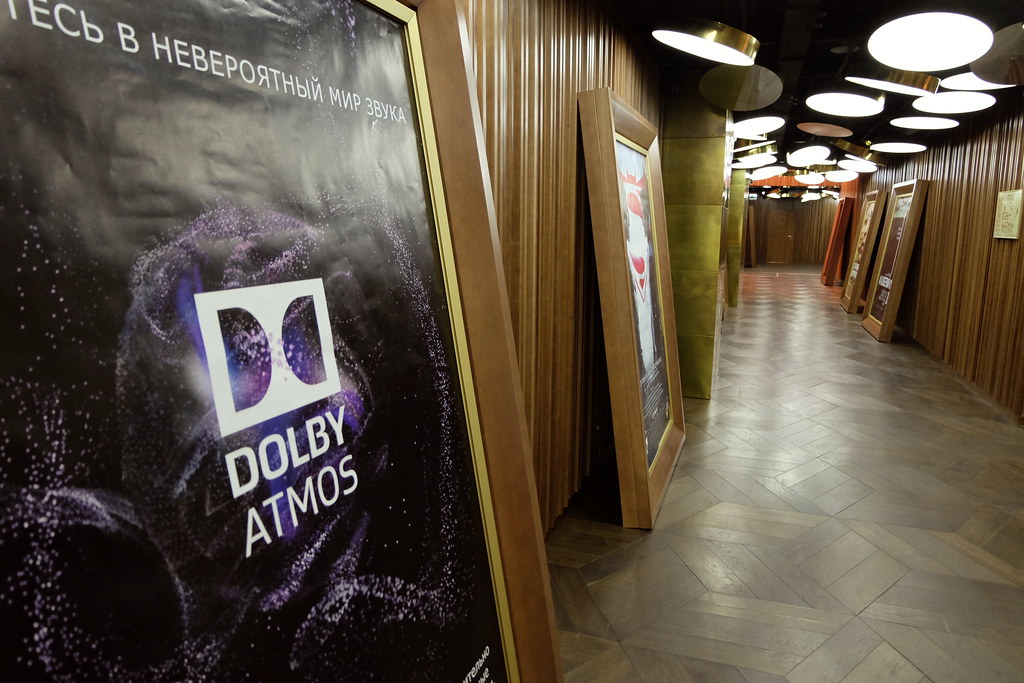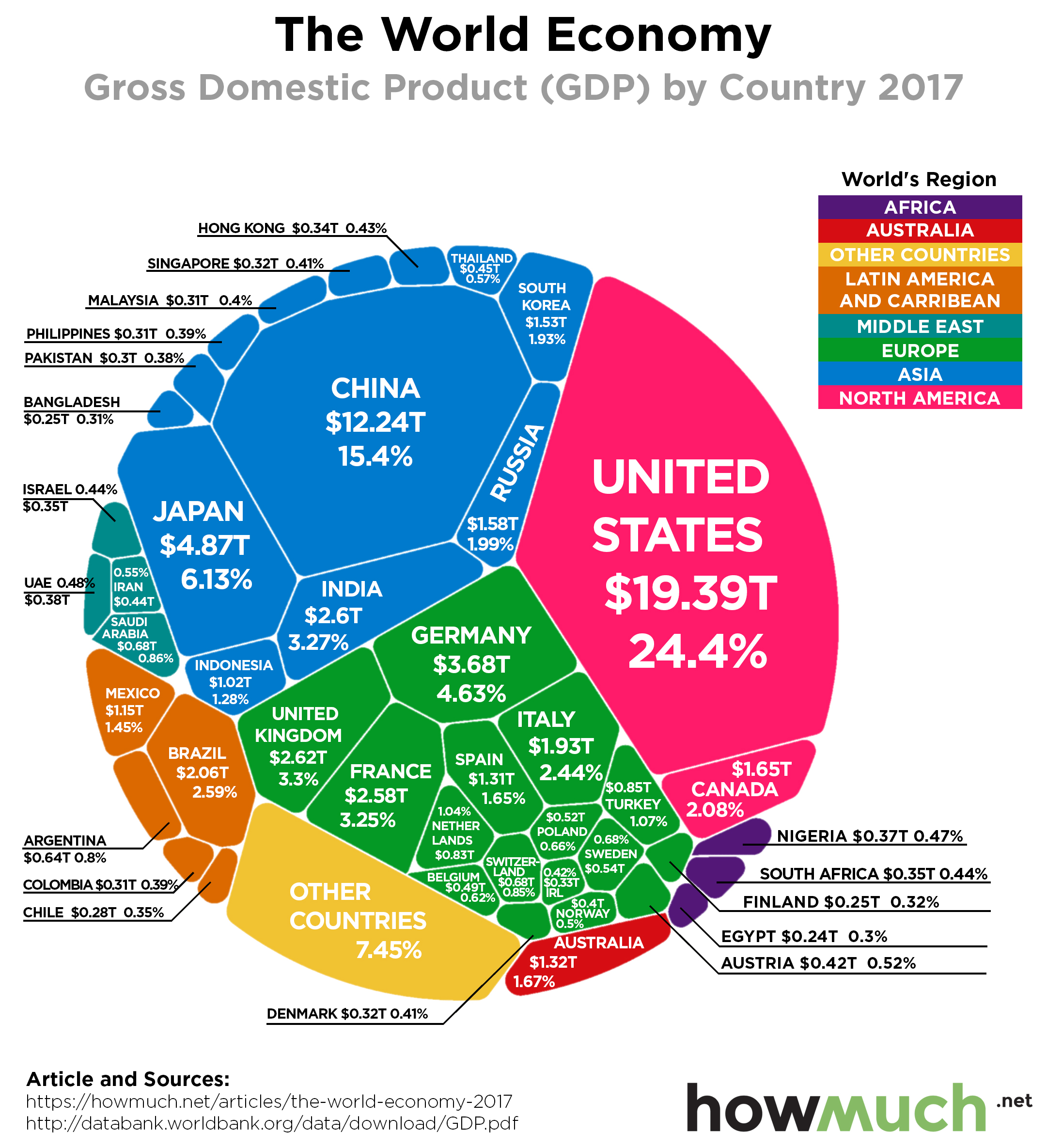
The Academy Awards have long stood as a preeminent cultural barometer for the film industry, a grand spectacle that not only celebrates cinematic excellence but also mirrors the profound shifts occurring within the broader entertainment landscape. This year’s ceremony, in particular, made history, not just with groundbreaking wins that pushed representation forward, but also by marking a significant milestone for streaming platforms when CODA, an AppleTV+ production, secured the coveted Best Picture award – an honor Netflix had pursued for years. This triumph underscored a decade of evolving film consumption habits, challenging the very foundations of how movies are made, distributed, and watched.
Indeed, the journey from traditional theatrical releases to ubiquitous streaming access has fundamentally altered the relationship between audiences, films, and the prestigious awards that celebrate them. No longer confined to the silver screen for extended periods, Oscar-nominated and winning films are now just a click away, readily accessible in the comfort of our homes. This shift raises crucial questions: How has the viewership of the annual awards show itself fared amidst these changes? And, more importantly, what tangible impact do Oscar nominations and wins now have on how and what audiences choose to stream before and after the glitzy ceremony?
To truly understand this seismic shift, we must delve into the data, examining how these transformations have unfolded over the past decade. From the fluctuating viewership of the Oscars telecast to the strategic maneuvers of advertisers and the undeniable “Oscar bump” experienced by films on streaming services, the story is one of rapid adaptation and an increasingly interdependent relationship between Hollywood’s oldest institution and its newest, most disruptive force. This in-depth analysis will explore the multifaceted ways streaming has reshaped the Oscars and the wider film ecosystem.

1. **Oscars Viewership: A Decade of Decline and Recent Rebound**For much of the past decade, the Academy Awards ceremony faced an “almost unbelievable decline” in its viewership figures. From a robust 43 million viewers in 2014, the audience steadily shrank, plummeting to 23 million in 2020. The decline reached a concerning nadir in 2021, when viewership dropped by more than half again, hitting an all-time low of just 10.4 million. This stark trend sparked considerable debate within the industry about the show’s relevance and its ability to captivate a mass audience in an increasingly fragmented media landscape.
However, the tide began to turn in 2022. That year saw a significant rebound, with 15.0 million viewers tuning in, marking a substantial 44.2% increase from the previous year. While much attention was drawn to “the slap heard around the world” involving Will Smith, Cole Strain, Samba TV’s Head of Measurement, noted that “Even before the slap… it was clear this year‘s awards show was on track to outperform last year’s ceremony.” This indicated a broader shift, suggesting that while controversial moments can certainly boost eyeballs, other factors were at play in reversing the decline.
The viewership growth continued through 2023 (16.8 million, +12.0%), 2024 (18.7 million, +11.3%), and into 2025, when the 97th Academy Awards attracted 19.5 million viewers, representing a 4.2% increase from the previous year. This marked the third consecutive year of viewership growth, signaling a potential stabilization or even resurgence for the long-standing awards show. One key factor contributing to this upswing, as Strain suggested, might be that “Streaming may have played a role in broadening interest for the films this year as viewers were able to easily watch all of the best picture nominees from the comfort of their home before Sunday night.” This direct accessibility through streaming platforms undoubtedly made it easier for audiences to engage with the nominated films, thereby potentially increasing their investment in the ceremony itself.

2. **The Historic Rise of Streaming in Best Picture Wins**The 2022 Academy Awards marked a pivotal moment in cinematic history, forever changing the perception of what constitutes an Oscar-worthy film and where it can originate. With CODA taking home the night’s biggest award, AppleTV+ achieved an unprecedented milestone, becoming “the first streaming platform to win Best Picture.” This was a significant coup, particularly as it had been an “honor Netflix has had in its sights for years,” demonstrating the fierce competition and high stakes involved as streaming services vied for the industry’s ultimate recognition.
CODA’s victory was not merely a win for AppleTV+ but a symbolic triumph for the entire streaming model. It signaled a clear validation of streaming-first productions by the Academy, traditionally a stronghold for films with extensive theatrical releases. This landmark achievement undeniably “sets the stage for the future of streaming,” blurring the once distinct lines between traditional studio fare and content exclusively available online. It forced the industry to reconsider where the “next Best Picture will get its start,” acknowledging the legitimacy and artistic merit of films bypassing traditional distribution channels.
This historic win was also reflective of a broader, accelerating trend within the Oscars themselves. Streaming platforms have steadily increased their presence and influence, moving from a marginal player to a formidable contender. By 2025, streaming platforms accounted for a substantial 35% of all Oscar nominations across various categories. This represents a remarkable surge from just 8% in 2019 and 24% in 2021, illustrating the rapid integration and growing recognition of digital platforms within the Academy’s selection process. The success of services like Apple TV+, Netflix, and others highlights their strategic content acquisition and production efforts, fundamentally altering the landscape of awards season.

3. **Shifting Demographics of the Oscar Audience**The audience tuning into the Academy Awards has a distinct demographic profile, which holds significant implications for both the ceremony and its advertisers. Data from 2022 revealed that viewership was “driven largely by liberal-leaning coastal cities.” Among the top 25 largest DMAs (Designated Market Areas), New York over-indexed the most, by a notable 51%. Close behind were San Francisco and Los Angeles, both over-indexing by 49%. This concentration suggests a cultural affinity for the arts and entertainment within these metropolitan hubs, which traditionally align with a more liberal demographic.
Beyond geographic and political leanings, the awards also displayed a clear economic skew. The audience tended “towards higher-income households with incomes over $100k over-indexing for the event.” This trend was even more pronounced among the wealthiest viewers, with “households with incomes over $200k over-indexing the most (+39%).” For brands and advertisers, this specific demographic profile makes the Oscars a uniquely valuable platform, offering a “prime opportunity to reach these valuable audiences” who possess significant disposable income and an interest in premium content.
Recognizing the importance of broadening its appeal, the Academy has also shown signs of attracting a slightly younger demographic in recent years. While still skewing older, the average age of Oscar viewers in 2025 was 56.3 years, showing a “slight decrease from 58.7 years in 2024.” This modest but notable shift “suggesting the Academy’s efforts to attract younger audiences are beginning to show results.” This continuous effort to diversify and revitalize its viewership remains crucial for the long-term sustainability and cultural relevance of the Academy Awards in a rapidly changing media environment.
Read more about: Inside the Broadcast Battle: Why NASCAR Fans Are Sounding Off on TV Coverage

4. **The Strategic Value of Oscars for Advertisers**For advertisers, the Academy Awards present a rare and highly strategic opportunity to connect with a specific, engaged, and affluent audience. The event’s established viewership, despite past fluctuations, continues to draw millions of households, making it a “huge draw” especially as “linear reach [is] becoming a real challenge for advertisers looking to make an impact.” This creates a concentrated moment where brands can reach consumers who are actively engaged with high-quality content and culturally relevant discussions.
Analysis of the advertising landscape during the awards confirms this strategic importance. Beyond ABC, the host network, Verizon emerged as a dominant advertiser, achieving the “highest overall reach during the live event,” connecting with 9.4 million U.S. households across its nine distinct advertisements. However, individual ad creative performance also stood out. Hulu’s ad for The Dropout, for instance, was the “single highest reaching ad creative,” reaching an impressive 6.1 million U.S. households. Given that Hulu also aired the Oscars live, it’s “no surprise that the Oscars is an ideal place for entertainment advertisers to reach a large and captive audience of movie and TV fans.”
The broader implication for brands is the necessity of “incorporating tentpole moments like the Academy Awards into a broader strategy.” This ensures advertisers can effectively “reach audiences when and where they’re most engaged.” As streaming platforms take an increasingly central role in the Oscars, engaging with these events allows advertisers to tap into a more invested streaming audience. The synergy between critical acclaim, high viewership, and targeted demographics makes the Oscars an indispensable platform for brands seeking impactful reach and engagement.

5. **Nominations as a Catalyst for Streaming Viewership**The impact of an Oscar nomination extends far beyond critical acclaim, serving as a powerful catalyst for streaming viewership even before the awards ceremony itself. Ahead of the March 27th ceremony, an examination of available streaming films from their nomination on February 8th through the week prior revealed significant shifts in audience engagement. This pre-ceremony period is crucial, as it allows viewers to “catch up on critically acclaimed films” they might have missed, driven by the Oscars acting as a “cultural marker for the ‘best’ films of the year.”
However, the effect of nominations is not uniform across all films. While the Netflix film Don’t Look Up was the “most streamed overall,” a closer look at its post-nomination performance revealed a different story. Only 6% of its lifetime viewership occurred after it received nominations – making it “the smallest ratio of all the films.” This suggests that blockbuster appeal or pre-existing popularity might lessen the relative impact of an Oscar nomination if a film has already reached a vast audience.
In stark contrast, CODA, despite “trailing in overall viewership,” experienced the “largest viewership increase of any streaming nominee.” A remarkable 38% of its lifetime viewership happened post-nomination. This highlights the power of Oscar recognition to elevate less-widely seen, critically acclaimed films, driving audiences to discover them on streaming platforms. This trend demonstrates how nominations can act as a potent recommendation engine, guiding viewers to engage with films that might not have garnered blockbuster attention but are now validated by industry prestige, encouraging them to participate in the “cultural conversation” surrounding the year’s top cinema.
Read more about: Charting the Rise: Inside the World of Nigeria’s Top Content Creators Shaping 2024

6. **The Post-Win Streaming Surge: A Proven Phenomenon**The impact of an Oscar win on streaming viewership is even more pronounced and immediate than that of a nomination, creating a demonstrable “Oscar-Driven Streaming Surge.” The question of whether “winning Best Picture drive viewership” was answered with a resounding “Absolutely.” CODA, fresh off its historic win for AppleTV+, saw an astounding “4x the amount of viewership during the week after its win than it saw during its initial premiere and first week on AppleTV+.” This dramatic increase underscores the immense power of the Academy Award for Best Picture in galvanizing audience interest and driving them to streaming platforms.
This phenomenon extends beyond the top award. Other films also experienced significant viewership boosts following their wins. For instance, 486,000 U.S. households watched King Richard in the week following Will Smith’s much-discussed Best Actor win. This figure was “equal to 37% of the viewership it saw during its day-and-date HBO Max premiere and first week streaming on the platform,” indicating a substantial post-awards bump. Conversely, films that didn’t win or had less prominent nominations saw a much smaller, or even negligible, effect. Don’t Look Up, for example, saw “just 2% of its Netflix premiere week viewership during the week following the awards show.”
This post-event binge-watching trend is a key consumer sub-trend, where viewers, motivated by cultural conversations and a desire for “validation of viewing choices,” flock to streaming services to catch up on or revisit award-winning content. Streaming platforms are quick to capitalize on this, with Apple TV+ reportedly sending out push notifications the week following CODA’s win. The data emphatically proves that Oscar wins translate directly into heightened engagement and increased streams, solidifying the awards’ role as a powerful “recommendation engine” in the streaming age.

7. **The Blurring Lines: Theatrical Window Shrinkage and Streaming’s Ascent**The traditional landscape of film distribution, once dictated by a rigid “once-immutable theatrical window,” has undergone a dramatic transformation, fundamentally reshaping how audiences consume movies. This window, which historically kept films exclusively in theaters for an extended period before home viewing options became available, “shrank dramatically” in the past decade. The advent of streaming, coupled with the unprecedented challenges of the pandemic, pushed “the in-person film experience to the brink,” accelerating a shift that was already well underway.
This rapid evolution was largely driven by a combination of factors, including declining ticket sales and the “explosive growth of Netflix,” which convinced “investors and distributors alike that streaming was the sole future for movies.” As a result, traditional giants like Paramount and Warner Bros. pivoted their strategies, focusing more on developing “their own streaming platforms and less on pure theatrical releases.” This led to revolutionary decisions, such as Warner Bros. dropping all its movies “simultaneously in theatres and online during the early days of the pandemic.” Disney also reduced its exclusive theatrical window to 45 days for major releases like Shang-Chi and the Legend of the Ten Rings and Free Guy, a move described by CEO Bob Chapek as part of the pandemic’s “recovery” phase.
The practical implications of this shift are clearly visible in the makeup of recent Oscar nominees. For example, in 2023, “five of the 10 contenders are currently available on subscription-based streaming, with four others on streaming pay-per-view” in Canada. This represents a significant departure from previous years and underscores how integrated streaming has become into the awards ecosystem. The accessibility provided by streaming, allowing films like ‘Everything Everywhere, All at Once’ to remain in the public consciousness longer, has directly affected “which movies got nominated,” demonstrating the profound and ongoing impact of this blurring line between theatrical and digital distribution.”

8. **The “Theatrical as Advertisement” Model: Reframing Distribution in the Streaming Age**The profound shift towards streaming has compelled film distributors to rethink the fundamental purpose of a theatrical release. In an era where streaming services are abundant, and Wall Street has grown wary of the profitability of streaming alone despite increased viewership, a new strategic paradigm has emerged. This new approach posits that a theatrical run is increasingly viewed not as the sole revenue generator, but as a powerful advertising tool for a film’s eventual launch on streaming platforms.
Entertainment industry strategists like Brandon Katz contend that even with streaming’s widespread success, the sheer saturation of services has led to a poor return on investment. This has prompted a realization among investors and distributors that while streaming is crucial, it may not always be the most profitable business model in isolation. Consequently, massive box office successes, exemplified by recent Best Picture nominees like ‘Avatar: The Way of Water,’ ‘Top Gun: Maverick,’ and ‘Everything Everywhere All at Once,’ remain highly desirable, confirming that significant theatrical performance still carries immense weight.
This reframing means distributors are actively committed to putting more movies back into theaters, recognizing the unique promotional value of the big screen. For the Academy Awards, this evolving strategy carries significant implications. To maintain its relevance, the Oscars must increasingly acknowledge and integrate films that succeed within this ‘theatrical as advertisement’ model, including both big-budget blockbusters and films that premiere exclusively on streaming services, thereby reflecting the industry’s hybrid distribution reality.

9. **The Evolving “Oscar Bump”: Nuances for Indie and Prestige Films on Streaming**While the “Oscar bump” for streaming viewership is undeniably potent, its effect is not uniform, particularly when considering independent and prestige films. The Oscars continue to act as a significant discovery engine, propelling less-mainstream titles into the public eye and onto viewers’ watchlists. Indie and arthouse films, such as ‘Flow’ and ‘Nosferatu,’ experienced notable increases in viewership post-awards, demonstrating the Academy’s power to introduce new cinematic experiences to broader audiences.
However, the nature of this bump varies significantly depending on a film’s initial release strategy and its platform. For theatrical releases, the “Oscar Bump” for Best Picture winners, measured by post-nomination box office increase, averaged 57% in 2025. This figure, while substantial, marks a decrease from the pre-streaming era’s average of 102% (2000-2015). In stark contrast, streaming releases see a more direct and often higher correlation: nominations boost streams by an average of 68%, while wins correlate with an impressive 112% increase.
This divergence suggests that for films already widely available on streaming, an Oscar nod serves as a powerful, immediate call to action. Yet, the financial uplift for “prestige films” on streaming isn’t always straightforward. ‘Variety’ media analyst Tyler Aquilina noted that ‘The Fabelmans’ saw its VOD chart position drop after receiving seven Oscar nominations, raising questions about whether nominations consistently translate to sustained financial success for all prestige films on digital platforms. This highlights the delicate balancing act required to galvanize a potent audience with the right collection of titles, as the audience for core awards fare has become challenging to sustain outside the industry itself.
Ultimately, the Oscars provide an invaluable platform for critical validation, which in turn encourages discovery and engagement on streaming services. This is especially true for independent or foreign language films that might otherwise remain below the general public’s radar, making the awards a crucial conduit for expanding cinematic horizons and appreciating quality filmmaking.

10. **Social Media’s Amplifying Role in Oscar Buzz: A Digital Ecosystem of Engagement**The modern awards season is not confined to television screens and red carpets; it thrives within a vibrant digital ecosystem, with social media platforms playing an increasingly vital role in amplifying Oscar buzz and driving audience engagement. In 2025, Oscar-nominated films collectively generated a staggering 3.8 billion social media impressions during the awards season (December-March), representing a significant 22% increase from the previous year. This immense digital footprint underscores the power of social platforms in shaping public perception and interest.
Among these platforms, TikTok has emerged as a particularly explosive engine for Oscar-related content. In the 2025 awards season, TikTok alone accounted for 1.2 billion views of Oscar-related content, a remarkable 145% increase from 2024. Other platforms also contributed significantly, with Instagram generating 950 million impressions (+18%) and YouTube seeing 390 million impressions (+32%). However, some established platforms, like X (formerly Twitter) and Facebook, experienced declines in Oscar-related impressions, signaling a shift in where audiences are engaging with awards content.
This pervasive social media coverage and buzz are instrumental in creating widespread awareness and generating intense interest in the nominated films. It fuels the cultural conversation, making it easier for viewers to participate in discussions and develop opinions on the year’s best cinema. The accessibility of these conversations, coupled with the immediate availability of films on streaming, translates directly into increased viewership. Social media, therefore, acts as a powerful, real-time recommendation engine, pushing films into the collective consciousness and onto streaming queues.

11. **Diversification of the Academy and its Nominees: A More Inclusive Vision of Cinema**The Academy of Motion Picture Arts and Sciences has made significant and continuous strides towards fostering a more inclusive and representative vision of cinematic excellence. This commitment to diversification is evident not only in the composition of its membership but also in the increasing representation among Oscar nominees across various categories. These efforts reflect a broader industry push for equity and a recognition of the diverse stories and talent shaping global cinema.
Regarding gender representation, 2025 marked a historic high, with women comprising 38% of all Oscar nominees. This is a substantial increase from 34% in 2024 and just 25% in 2020. Furthermore, women directed an impressive 42% of Best Picture nominees in 2025, a stark contrast to 30% in 2024 and a mere 12% in 2020. These figures demonstrate a clear and accelerating trend towards greater recognition of female talent behind and in front of the camera.
Similarly, progress has been made in racial and ethnic diversity. People of color constituted 29% of all nominees in 2025, a slight decrease from 31% in 2024 but still significantly higher than the 19% recorded in 2020, before the Academy’s expanded diversity initiatives took full effect. This ongoing effort ensures a wider range of voices and perspectives are acknowledged and celebrated, reflecting the multicultural reality of global audiences and filmmakers.
The global reach of the Oscars is also expanding through increased international film representation. Non-English language films garnered a record 32 nominations across all categories in 2025, a notable rise from 24 in 2024 and 18 in 2023. Since ‘Parasite’s’ historic Best Picture win in 2020, international films have consistently averaged 3.2 nominations annually outside the International Feature Film category. This trend underscores a growing appreciation for diverse cinematic narratives from around the world.
These shifts in nominations are intrinsically linked to the diversification of the Academy’s membership. As of 2025, women make up 36% of the 10,875 total members (up from 25% in 2015), and people of color represent 23% (up from 10% in 2015). The Academy’s proactive invitation of new members, with 47% being women and 53% from underrepresented ethnic/racial communities in 2024, is clearly fostering a more inclusive and forward-thinking body, which in turn influences the films that are recognized and celebrated.

12. **The Economic Ripple Effect: Oscar’s Broader Impact and Awards Season ROI**The influence of the Academy Awards extends far beyond the red carpet and critical acclaim, generating a substantial economic ripple effect that benefits host cities, studios, and streaming platforms alike. In 2025, the ceremony and its associated events contributed approximately $183 million in economic impact to Los Angeles, a testament to the direct spending, tourism, local employment, and retail activity generated by this global spectacle.
For films themselves, an Oscar nomination or win translates directly into a measurable return on investment, albeit with varying degrees across different categories and distribution models. The “Oscar Bump” for Best Picture nominations, for instance, led to an average revenue increase of 57% for films. More specifically, a Best Picture win correlates with an impressive 98% average revenue increase, while Best International Films see an even more dramatic boost, with a 124% increase post-nomination and a staggering 215% increase post-win. For streaming releases, nominations alone drive an average 68% increase in streams, escalating to a 112% increase following a win.
This significant financial upside motivates studios to invest heavily in Oscar campaigns. The average studio expenditure on a Best Picture nominee’s campaign reached approximately $10-15 million in 2025, representing a 35% increase over a decade. These campaigns are meticulously planned, allocating significant portions to advertising (40%), screenings and events (30%), and talent appearances (20%), with digital and social media taking 10%. The data supports this investment, showing that studios spending over $20 million on campaigns achieved a 64% success rate in securing Best Picture nominations over the past five years, compared to a mere 28% for those spending under $10 million.
Consequently, the Oscars remain an indispensable strategic asset for studios and streaming platforms. The direct correlation between awards recognition and heightened audience engagement, coupled with the substantial economic impact and proven return on campaign investment, solidifies the Academy Awards’ position as a crucial driver of both cultural prestige and financial success within the evolving entertainment landscape.
Product on Amazon: Achievement Gold Toned Award Trophy 10.625″ with 4 Lines of Custom Text for Award Ceremonies, Party Favors, Theme Party, Birthday Party, Movie Night, Office Competition, or Classroom Prize
Brand: TrophyPartner
Binding: Apparel Product Group: Sports
Price: 29.95 USD
Rating: 4.8 Total reviews: 591
Features:
1. 10.625″ Achievement award trophy. Figure is gold toned plastic and sits on a weighted plastic base. High quality.
2. Add up to 4 lines of your own personalized custom text to a gold metal plate which gets attached to the base to no additional charge to recognize an important person.
3. These award trophies are the perfect choice for corporations, businesses, and individuals for their wide appeal. It also makes a great choice to recognize a frontline essential worker. Great award for any outstanding dramatic performance or star achiever in any organization.
4. This trophy is perfect for best mom, best dad, best girlfriend, best boyfriend, best friend, best boss, best co-worker and many more.
Shopping on Amazon >>

13. **Critical Acclaim vs. Commercial Success: A Shifting Balance in Oscar Recognition**The Academy Awards have long navigated the intricate balance between honoring critically acclaimed, artistically profound cinema and recognizing commercially successful films that captivate mass audiences. Historically, there has often been a perceived divide, with the Oscars sometimes favoring critical darlings over box office giants. However, recent trends suggest a notable shift, indicating an increasing importance of commercial success in the post-pandemic era, alongside sustained critical validation.
In 2025, Best Picture nominees collectively boasted an average Rotten Tomatoes score of 91%, reaffirming that critical acclaim remains an exceptionally strong predictor of Oscar nominations. Yet, these same films also achieved an average worldwide box office of $143 million. This data points to a burgeoning convergence, where films are increasingly achieving both high critical praise and significant commercial appeal, challenging the notion that the two are mutually exclusive within the awards circuit.
Further exemplifying this trend, the 2025 Best Picture winner itself grossed an impressive $285 million worldwide against a production budget of $45 million, yielding a substantial 6.3x return on investment. This particular success story underscores the Academy’s recent trajectory of recognizing commercially viable films, moving beyond years where it predominantly favored critical darlings with more modest box office results. The shift suggests a more holistic appreciation for films that resonate widely while still maintaining artistic integrity.
This evolving balance reflects the broader industry’s adaptation to a hybrid distribution model and the need to engage diverse audiences. While artistic merit will always be paramount, the growing acknowledgment of films that successfully blend critical excellence with commercial viability indicates a pragmatic evolution of the Academy’s selection criteria, ensuring its relevance to both the art and business of filmmaking.

14. **The Future Trajectory: Emerging Trends in Oscar and Streaming Interplay**Looking ahead, the Academy Awards and the broader film industry are poised for continued evolution, with several key trends shaping their future trajectory. The synergy between streaming platforms and the Oscars is expected to deepen, creating a dynamic and increasingly interdependent relationship. Streaming platform nominations, for instance, are projected to stabilize around 35-40% of total nominations, cementing their status as major contenders in the awards race.
Diversity will remain a central theme, extending across various facets of the industry. International film representation is anticipated to grow steadily, projected at approximately 5-8% annually, further enriching the global scope of the Oscars. Concurrently, genre diversity among nominees is set to increase, with a particular rise expected in horror and science fiction films, reflecting shifting audience tastes and creative boundaries within cinema. The Academy itself is on a clear path towards gender parity, with projections indicating this milestone could be reached by approximately 2032, further diversifying its voting body.
Demographically, the average age of Oscar winners is expected to continue its downward trend, potentially reaching around 41 years by 2030. This suggests an ongoing embrace of younger talent and fresh perspectives within the industry. Crucially, the economic value of an Oscar win for streaming films is projected to continue its ascent relative to theatrical releases, solidifying streaming’s financial leverage and influence within the awards ecosystem.
The Academy Awards, in essence, will persist as a critical bellwether for industry trends, offering vital insights into studio strategy, talent compensation, and evolving audience viewing patterns. Their enduring impact on both cultural prestige and commercial success means they will remain a pivotal moment, continually adapting to and shaping the future of filmmaking and its consumption. As the lines continue to blur and innovation accelerates, the Oscars stand as a testament to cinema’s enduring power and its remarkable capacity for transformation in the digital age.



